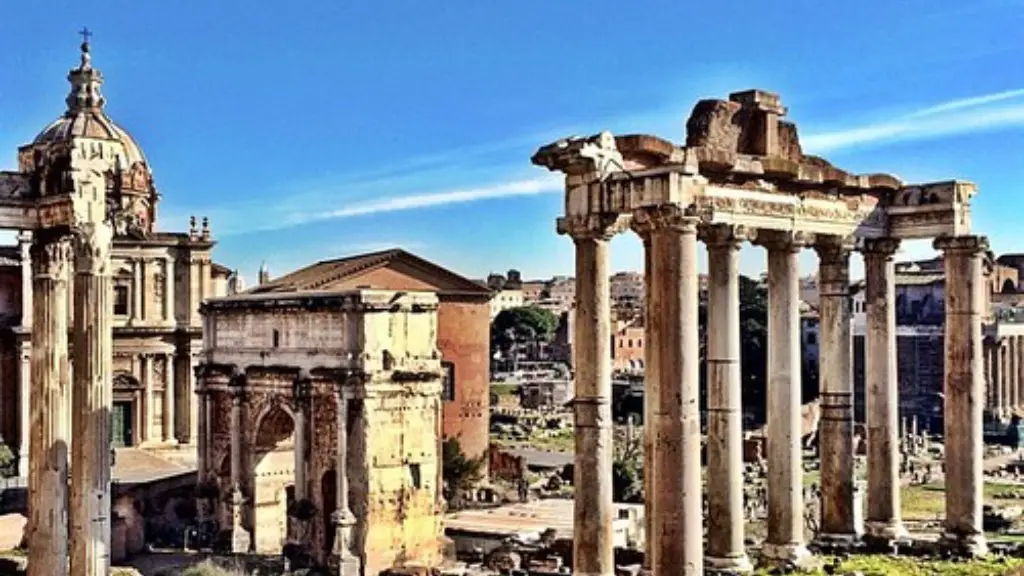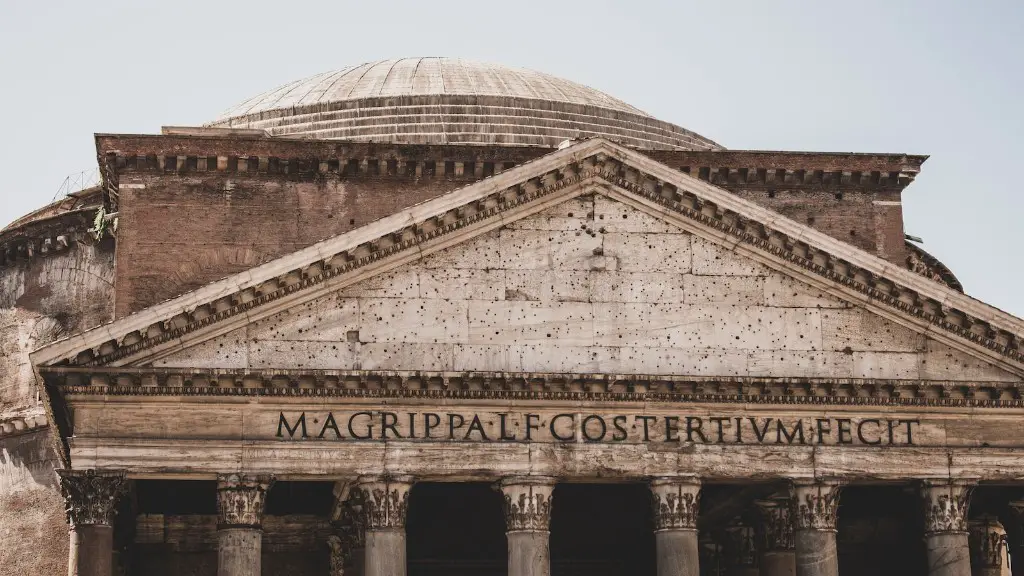Daily activity
Slaves in Ancient Rome played an important role in many aspects of daily life and were a major part of the Empire’s economy. Slaves worked in both public and private life, from manual labor to household servants to running businesses. They were a vital part of the Roman economy, providing valuable labor for agricultural work, trades and crafts, and services, among other responsibilities. Slaves in Ancient Rome were expected to carry out any task that their master wished, ranging from running errands to cleaning to teaching and more. Slaves were also required to work in the fields to produce food, provide labor in the mines, and contribute to the building projects of the Empire.
Slaves in Ancient Rome were considered to be property of their owner and had no rights or freedom of their own. The Romans believed that it was their right to abuse and mistreat their slaves, and harsh punishments were often given out by the masters. Slaves were treated like animals, deprived of their human rights, and some even faced torture and death as punishment. It was common for slaves to be sold and traded, as their masters saw them as objects of value and not as humans with dignity and freedom.
Despite their status as slaves, there were still some opportunities for advancement for slaves in Ancient Rome. Skilled slaves were highly valued and were able to become part of their master’s household and receive higher wages for their work. Slaves who were well-liked by their masters were also able to rise in the ranks and become trusted advisors and even personal assistants. Education was also an option for some slaves, and those who were able to obtain an education could potentially secure better jobs and have more control over their lives.
Of course, the main responsibility of slaves in Ancient Rome was to perform manual labor. These tasks could range from cleaning, cooking, and tending to livestock, to more specialized work such as weaving and metalworking. The slaves would also help to construct buildings and monuments, assemble warships, and transport goods and materials. Slaves in Ancient Rome would also assist in the daily aspects of their master’s lives, such as cooking their meals, serving drinks at parties and meetings, and even accompanying them on trips.
Outlook and Demographics
Slaves in Ancient Rome constituted a large portion of the population, estimated to be between 30-50%. This is due to a variety of factors, such as war, debt, and the inability to pay taxes. Slaves were most prevalent in the lower classes, though there were some instances of enslaved people in even the highest classes of Ancient Rome. Even though slavery was illegal in Ancient Rome, it was still practiced, albeit in secret. This made it difficult to get an accurate estimate of the population of slaves.
The outlook for slaves in Ancient Rome was fairly grim. In addition to the lack of rights and dignity afforded to them, slaves were not as valued in Ancient Roman society as they had been in other civilizations such as Egypt and Greece. They were relegated to the lower classes, so their chances of social mobility were extremely low. Slaves were often treated as if they were soulless property and were thus viewed as expendable. It was rare for slaves to gain their freedom, as they would be required to pay off a large sum of money, something that most slaves would not have access to.
The demographic of slaves in Ancient Rome was largely comprised of lower class citizens, with some upper class citizens also falling into this category. Slaves were often of foreign origin and were taken from warring countries or bought from slave traders. The majority of slaves were male, though there were some female slaves as well. Some slaves were even freeborn, as some families were unable to pay their taxes and were enslaved as a form of punishment.
Emancipation
The process for emancipation of slaves in Ancient Rome was a lengthy, often difficult process. In general, slaves could be freed through manumission, in which the owner would voluntarily grant a slave his/her freedom. This could be done through private negotiation or through the courts. The slave could also be freed through public proclamation or by the Emperor. Other ways of gaining freedom included winning a game of chance or buying freedom from a friend or family member.
It should be noted that emancipation was not always easy. Even after a slave had been granted his or her freedom, they still faced certain restrictions. They were not allowed to vote or hold public office, for example, and some even had to pay a freedom tax in order to officially be granted their emancipation. Slaves in Ancient Rome who managed to acquire their freedom were monitored by the state in order to ensure that they continued to live a respectable life. It was not uncommon for the state to intervene and re-enslave a freed person if they were found to be living an immoral life, such as engaging in prostitution or begging.
Although emancipation of slaves was possible in Ancient Rome, it was not a widespread occurrence. Typically, it was only the wealthiest citizens who could afford to buy back their freedom, and even then, it was not always possible. Most slaves in Ancient Rome remained slaves until their death, but for those few who managed to gain emancipation, it was a chance for a new life and a fresh start.
Rebellion
Slaves in Ancient Rome had few options for resisting their masters, but those who were brave enough did occasionally attempt to rebel. The most famous of these rebellions is the revolt led by Spartacus, in which several hundred slaves rose up against their captors and marched on Rome. Although the revolt was ultimately unsuccessful and Spartacus was killed, it should not be forgotten that the slaves were bravely willing to stand up for their freedom, showing that they were not just docile, obedient slaves.
Rebellions against the Roman masters were uncommon, however, as the punishments for such an act could be severe. Slaves could be sentenced to death or forced to return to their masters and endure a cruel punishment. It was also dangerous for slaves to rebel, as they had no real weapons and often had to resort to unconventional tactics in order to make their stand. As such, it is rare to find any successful cases of slave rebellions in Ancient Rome.
Although it is unlikely that there would have been a large-scale uprising of slaves in Ancient Rome, it is important to remember that some slaves were willing to die for their freedom. Slaves had little to no rights, so any acts of resistance by them were considered to be extremely brave and heroic. They serve as an inspiration for other oppressed people to stand up for what is right and fight for the freedom that they deserve.
Legacy
Slaves in Ancient Rome played an integral role in the development and prosperity of the Empire. They were vital for manual labor and provided valuable services for their masters. While they may not have been equal to citizens in terms of rights, their contributions helped shape the society and culture of Ancient Rome. They also served as an example of what can be achieved in the face of adversity and oppression.
Slaves have continued to be a part of history since the fall of Ancient Rome, as they have been used and abused in various parts of the world to this day. It is a tragic reality that many people still have to live and work as slaves, and it is important to remember the history of slavery in Ancient Rome in order to understand how it has evolved and persists in the present day.
The legacy of slaves in Ancient Rome is one of courage, resilience, and strength in the face of adversity. They fought for their freedom and served as examples of what can be achieved when people are not afraid to stand up for their beliefs. Even though they were not given the rights and privileges afforded to citizens, their contributions and perseverance played an important role in the development of the Roman Empire.
Conclusion of Slavery
The practice of slavery in Ancient Rome is widely viewed as one of the most brutal and inhumane forms of dehumanization in human history. The lack of basic human rights afforded to slaves was shocking, even by the standards of the time, and the treatment they endured was truly deplorable. It is estimated that up to 50% of the population of Rome was in slavery, making it one of the most pervasive systems of oppression ever seen.
The legacy of slavery in Ancient Rome is one of suffering and oppression, but also of bravery and defiance. Slaves in Ancient Rome were subjected to grueling labor and deprived of their basic human rights, but some found the strength and courage to rise above their circumstances and fight for their freedom. Although slavery was a cruel and oppressive system, the legacy of those who endured it should never be forgotten.




